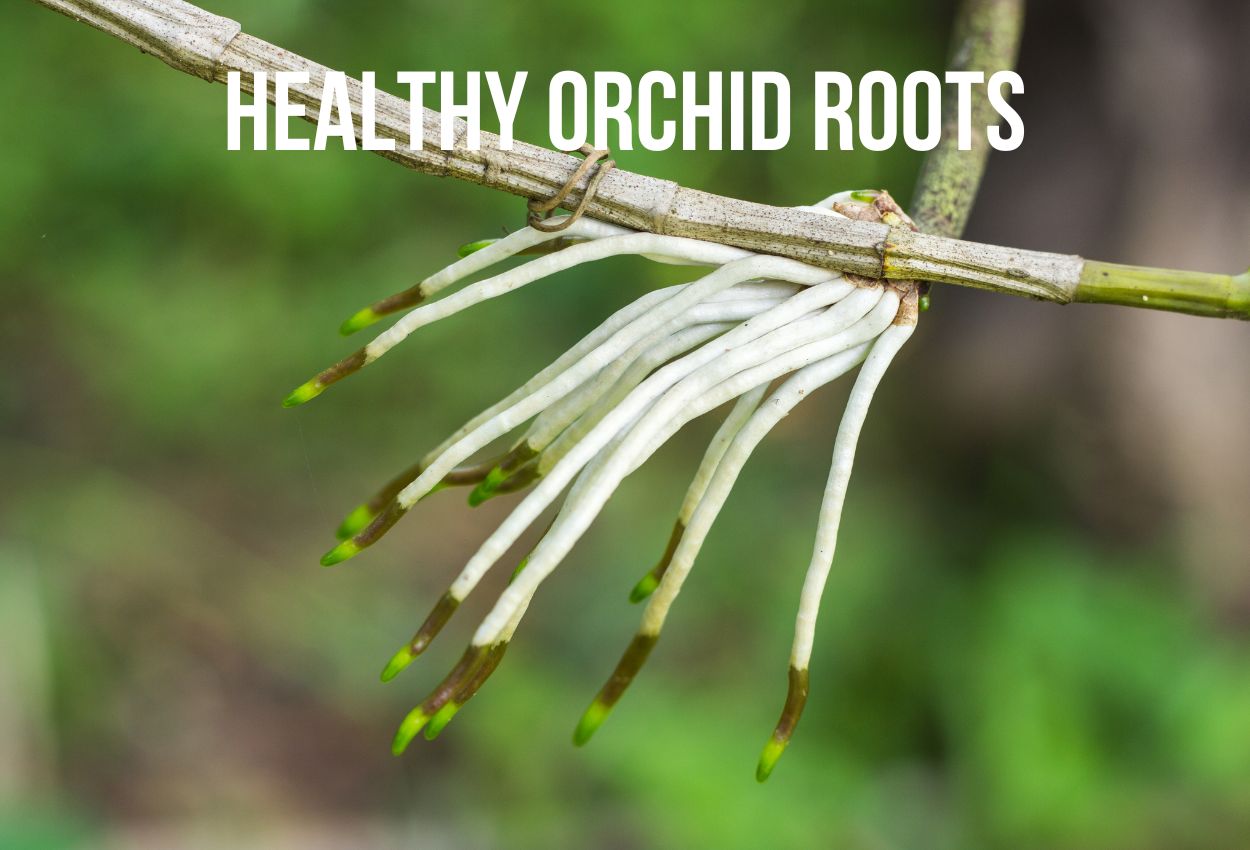Healthy orchid roots are unique in many ways, including the appearance of their roots – unlike any other plant in the kingdom. But, don’t be fooled by their distinct appearance. Their roots serve the same purpose as any other plant’s roots: absorbing water and nutrients. Caring for your orchid’s root system is vital in keeping these exquisite plants healthy and vibrant. Learning the art of your orchid care and root maintenance is essential to ensuring the longevity of your treasured blooms.
3 Main Jobs of Healthy Orchid Roots
No matter the type of orchid, healthy orchid roots have a triple mission to fulfill.
1. Absorb nutrients and hydration.
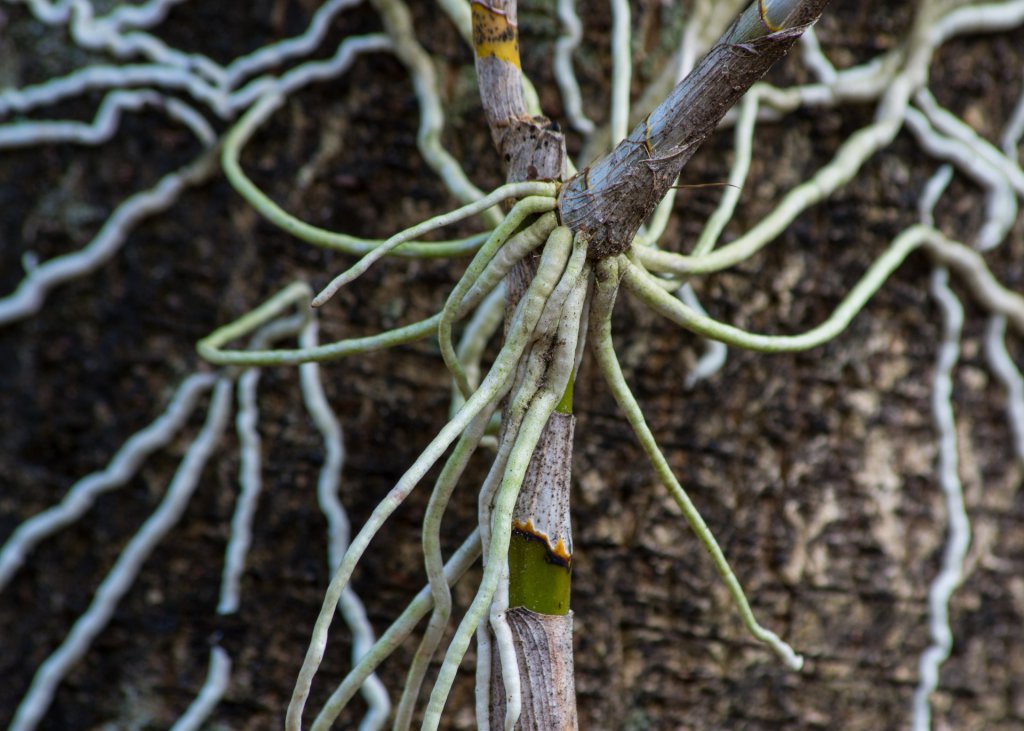
Orchids have a unique way of taking care of themselves. Job number one for these plants is to eat and drink all the necessary nutrients, minerals, and water to survive. Unlike other plants that rely on soil as their source of water and nutrients though, most orchids, are a little more unconventional. They can absorb water and everything they need from the air around them, making them some of the coolest botanicals around.
2. Keep the plant safe and steady.
Your second task is to anchor the plant down securely. With orchids, this can prove to be quite the puzzle as their roots have a tendency to twist and turn in all sorts of directions. It’s definitely a job that will require some patience and finesse!
3. Storing away extra nutrients.
Imagine having a secret place where you can store all the necessary ingredients to survive the toughest winters. Job number three is all about being a food storage hero, stocking up on all the essential nutrients that your body craves during lean times. With every preserve and jar you pack away, you’re one step closer to being the master of your food destiny. Prepare for any emergency and become a savvy survivor with your very own food storage cellar.
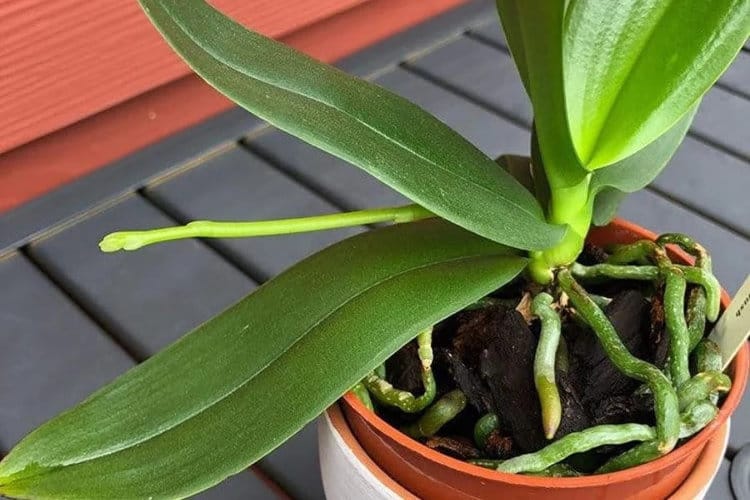
Healthy orchid roots: Types of Orchid Roots
Unearthing the Secret Roots of Orchids: A Tale of Fine and Thick Roots. Knowing the root type and of roots your orchid has will unlock the key to finding its perfect potting media match. It’s time to dig deep and uncover the mystery roots of these captivating flowers.
Thin-rooted orchids
Imagine delicate spidery green and white roots from below, so thin they resemble the sprouts you grow at home. These are the delicate roots of the orchid, a beautiful and unique plant that requires special care to thrive. Though small and fragile, these roots play a crucial role in the plant’s growth and maintenance. So next time you catch a glimpse of these elusive green roots, take a moment to appreciate their beauty and importance.
Thick-rooted orchids
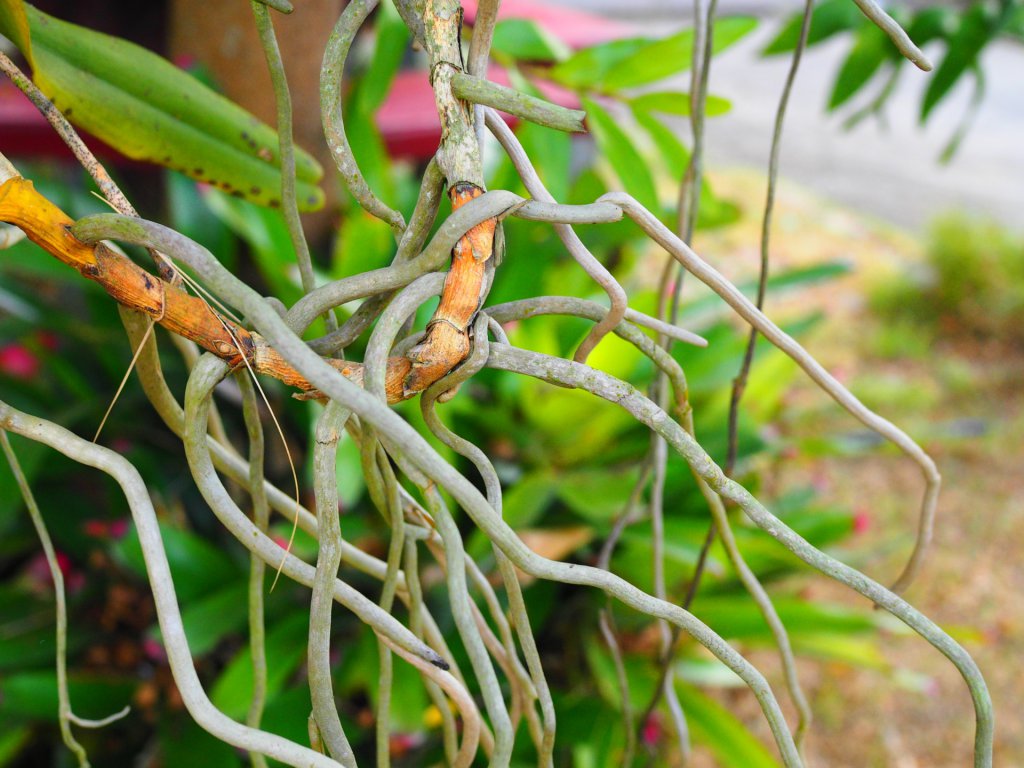
Did you know that some orchids have thick, tentacle-like roots that resemble young string beans growing orchids or even octopus arms? These roots grow on older and more established orchid plants and are much sturdier than typical orchid leaves and roots, making them resistant to damage from handling.
What Are Aerial Healthy orchid roots?
Some orchids have an interesting feature known as aerial orchid roots, also called orchid tendrils. These tiny roots extend into the air and can be quite mysterious to those who aren’t familiar with them. It’s important to note that not all orchid plants have these aerial roots grow out, so they add an extra layer of intrigue to those that do. Despite their fascinating appearance, aerial orchid roots are often misunderstood and overlooked.
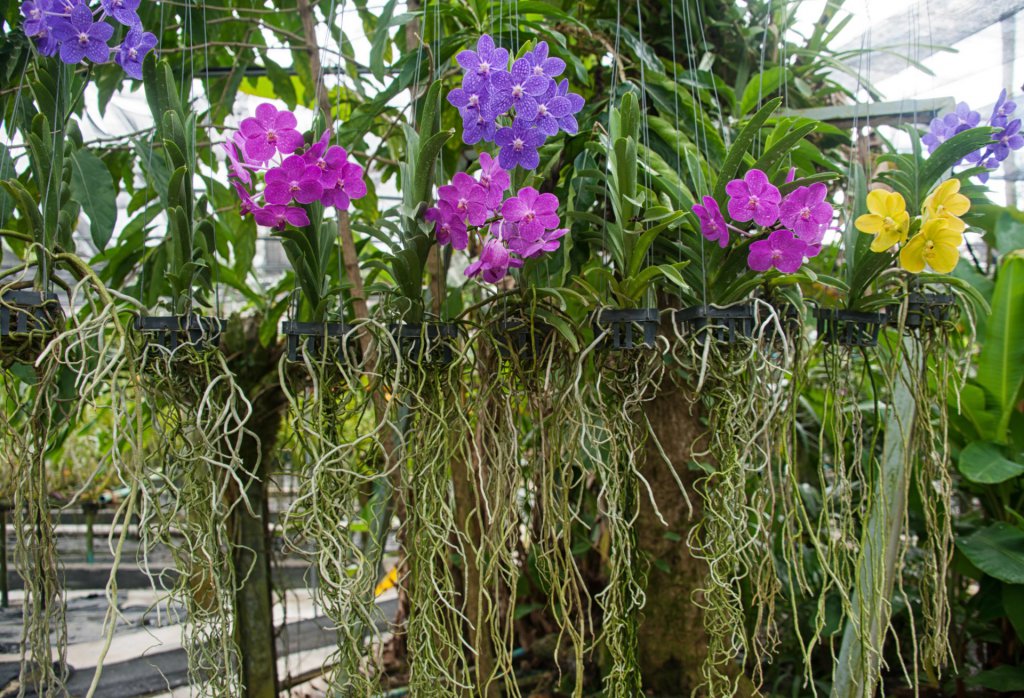
These wild roots have a mind of their own! Orchids don’t play by the rules when it comes to root growth – their roots shoot straight up into the air, defying the norms of traditional plant growth. You won’t see these rebellious roots hidden underground, as they proudly show themselves off to the world. Say hello to air roots!
The orchid’s roots may seem like they’re out of place, almost as if they’re leaping towards the sky. Unfortunately, some rookies in the realm of orchid cultivation may mistake these precious roots for unwanted weeds or pesky sprouts and cut them off, leading to the orchid’s untimely demise.
Although they may appear peculiar, air roots serve a crucial purpose just like any other root system in plants. It’s essential to keep aerial roots, preserve them and ensure they’re guarded with great care.
What Are Adventitious Healthy orchid roots (Keikis)?
Imagine a word that doesn’t quite fit in, like a puzzle piece from a different puzzle. That is the essence of “adventitious,” a modern word that stems from the Latin “adventicious” meaning “not belonging to.” It’s a word that captures the feeling of being out of place, of being an anomaly in a world that expects conformity.

Did you know that some orchids have a unique way of self-propagating? It’s through adventitious roots that sprout small new orchid plants, also known as keikis (the Hawaiian word for “baby”). So if you see a Dendrobium with a keiki growing out of its stem, it’s not a flaw but a natural process!
Transform your Keiki into a thriving new orchid by delicately extracting its “roots” and giving it new life in the perfect potting mix, or elevate its growth by attaching it securely to a stunning host rock or wooden substrate.
Which Orchids Have Aerial Roots?
Have you ever wondered why some orchids develop those fancy aerial roots while others don’t? Well, it turns out that orchids have three different ways of growing – on the ground, on trees, and on rocks – and this has a big impact on whether or not they sprout those extra aerial roots. So let’s dive into the wild world of orchids and discover what makes these unique plants tick!
Terrestrial orchids
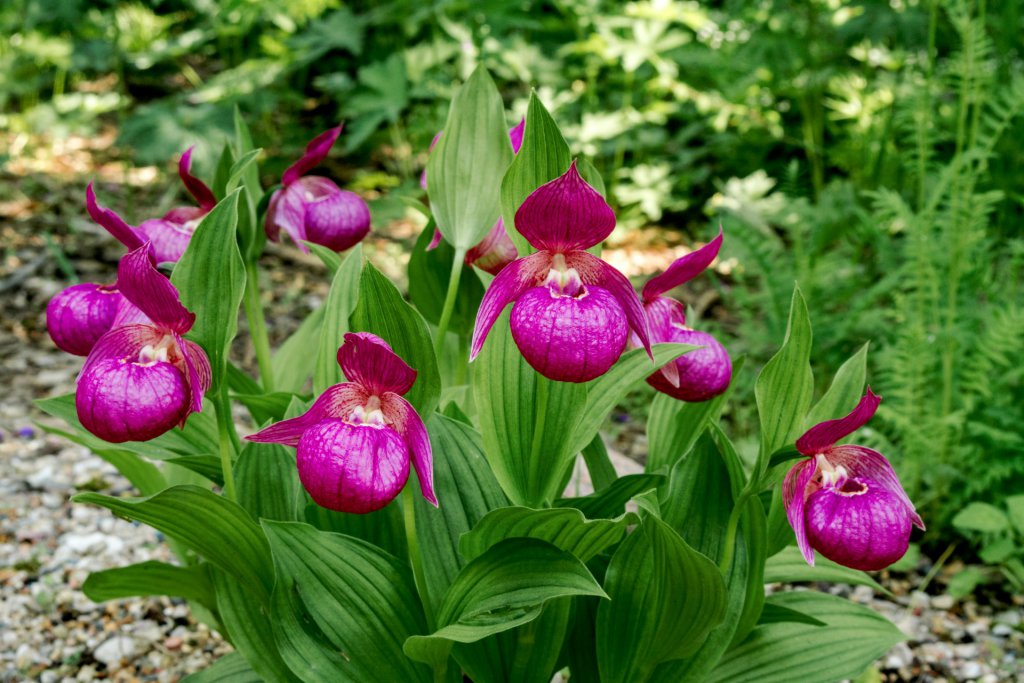
The cypripedium macranthon is an enchanting orchid that prefers to keep its roots grounded. This beautiful plant belongs to the terrestrial orchid family, which means it won’t sprout any fancy aerial roots. But don’t let its earth-bound nature fool you – this orchid’s roots is still a sight to behold!
Did you know that orchid roots are explorers of the dark and moist underworld? Rather than staying on the surface like other plants, they venture deep into the potting media or forest floor to secure their footing. Orchids truly are masters of adapting to their surrounding environment.!
The world of orchids is vast and enchanting, and some of the most beloved terrestrial species are Cymbidium, Cypripedium (also known as the graceful lady slipper orchid), Calanthe, and Dactylorhiza (a delightful marsh orchid). These beauties have captured the hearts of many flower enthusiasts with their unique shapes and stunning array of colors. From elegant whites to bold pinks and fiery oranges, these terrestrial orchids are sure to dazzle and delight.
Tree-growing orchids

The Dendrobium orchid is aptly named after the Greek word for tree, as it belongs to the family of epiphytic orchids, orchid leaves that grow atop of trees, rocks or other mounts. These types of orchids are not your average houseplant; they have unique roots that are exposed to air and moisture, allowing them to thrive in the wild.
Imagine a lush and untamed world where orchids run wild and free, clinging to the trunks and branches of towering trees. In this natural habitat, epiphytic orchid species thrive on the support and nutrients provided by their bright green former hosts. Yet in a controlled environment, such as a greenhouse, orchid enthusiasts have devised their own unique methods of mounting these delicate flowers. By using materials like corkboard, driftwood, and hardwood, they seek to recreate the organic essence of the wild, inviting these stunning blooms to display their beauty in a whole new way.
The Phalaenopsis orchid is the superstar among tree-growing orchids, captivating garden enthusiasts and plant lovers alike. Other renowned members of this orchid family include the Dendrobium and Cattleya, each with their charm and allure.
Rock-growing orchids

Imagine a stunningly beautiful and unique orchid that defies the rules of most plants – it grows on rocks! These specialized orchids, known as lithophytes, have evolved to thrive in tropical environments where they cling onto exposed rocks in the wild. One such impressive species is the maxillaria, also known as the “coconut pie” orchid. It’s a true marvel of nature that will surely leave you in awe of its abilities to grow in unexpected and challenging environments.
The orchids use the rocks as their anchors, wrapping their roots around the hard surfaces for support. They also have a knack for finding secret hiding places, snuggled up in tiny crevices to grow and thrive.
Discover the mesmerizing world of orchids that thrive on rocks! These tough and resilient plants, such as the elegant Dendrobium, the exotic Bifrenaria, and the striking bright green Maxillaria, have evolved to adapt to harsh environments and grow without soil. Don’t miss the chance to explore the fascinating beauty of these rock-growing orchids.
Healthy orchid roots: How to Know If Your Orchid Roots Are Healthy
If you want to become a pro at determining whether plants are thriving or struggling, you need to start with a fundamental lesson on the anatomy of healthy orchid roots first. This way, you’ll be able to tell which unhealthy orchid roots are robust and healthy and which ones indicate that the plant may be in trouble.
Gain a deeper insight into orchid roots and their complexities, and unlock the secrets to diagnosing and restoring their health. By grasping the intricacies of these delicate plant structures, you can discover the root of the whole orchid root care problem and nurture your orchids back to their former glory.
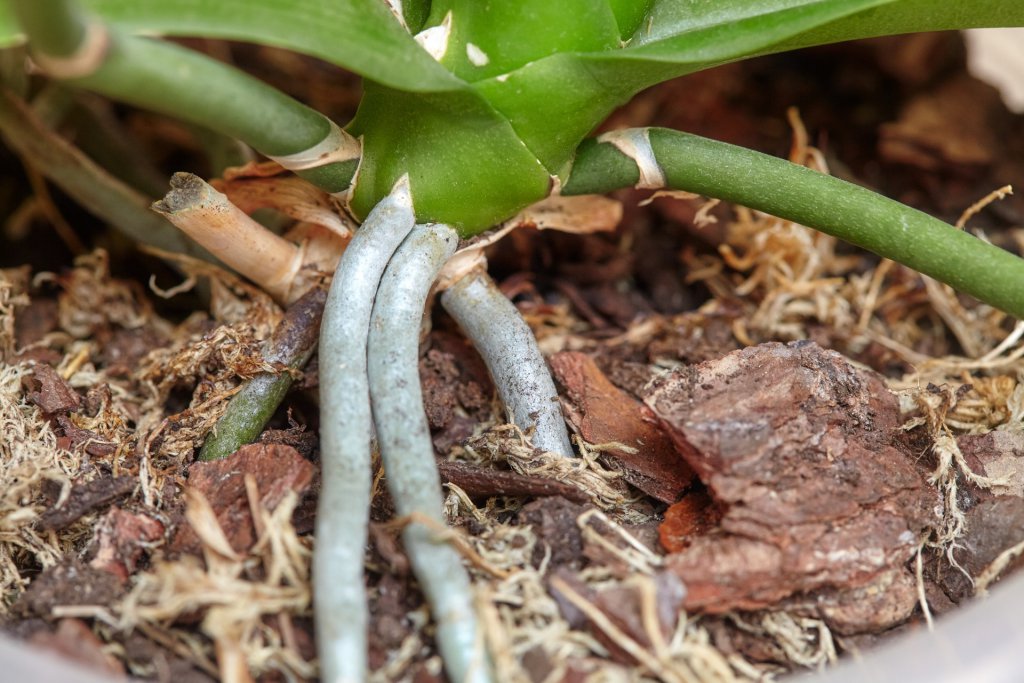
Did you know that orchids have a unique root structure? The outer layer, called velamen, is like a sponge that absorbs moisture and nutrients. It’s no wonder these plants are able to thrive in their natural habitats!
The intricate system of an orchid’s vascular tissue acts as its own circulatory system, delivering vital nutrients and moisture from the roots up to the rest of the plant. Just like our own blood vessels, this network plays a vital role in keeping other roots and the whole healthy orchid that’s health, healthy and thriving.
Delicate and vibrant, the healthy roots’ of a thriving orchid plant are a marvel to behold. While each orchid plant may have its own unique root system, there are certain traits that can be observed across the species. Some boast roots that are long and winding, while others are short and stocky. The width of these roots may differ as well, with some being thin as a hair while others are thick and sturdy. Regardless of their individual differences, healthy orchid plant roots all share a common thread – they are strong, resilient, and capable of delivering vital nutrients to the plant.
- Watch as your plants flaunt vibrant, green tips signaling growth and vitality. Don’t be surprised if a few show off a daring shade of red, just to keep you on your toes. Take note of those extra-long tips hinting at an energetic root system hard at work.
- The velamen is like a fluffy white or silvery blanket that wraps around the base of the root, reaching out to the colorful tips. It’s soft and spongy to the touch, creating a cozy home for the plant.
- Imagine a world where trees can grow in any direction they please – upwards, downwards, or even sideways! What makes them truly unique is their round, plump, and strikingly white or silver roots, delicately tipped with hues of luscious green or fiery red. It’s as if these trees are nature’s works of art, growing freely and creatively in their own unique way.
Healthy orchid roots: How to Spot Unhealthy Orchid Roots
Discovering sick roots is a breeze with epiphytic and lithophytic orchids as their roots are conveniently exposed, leaving no room for mystery or guesswork!
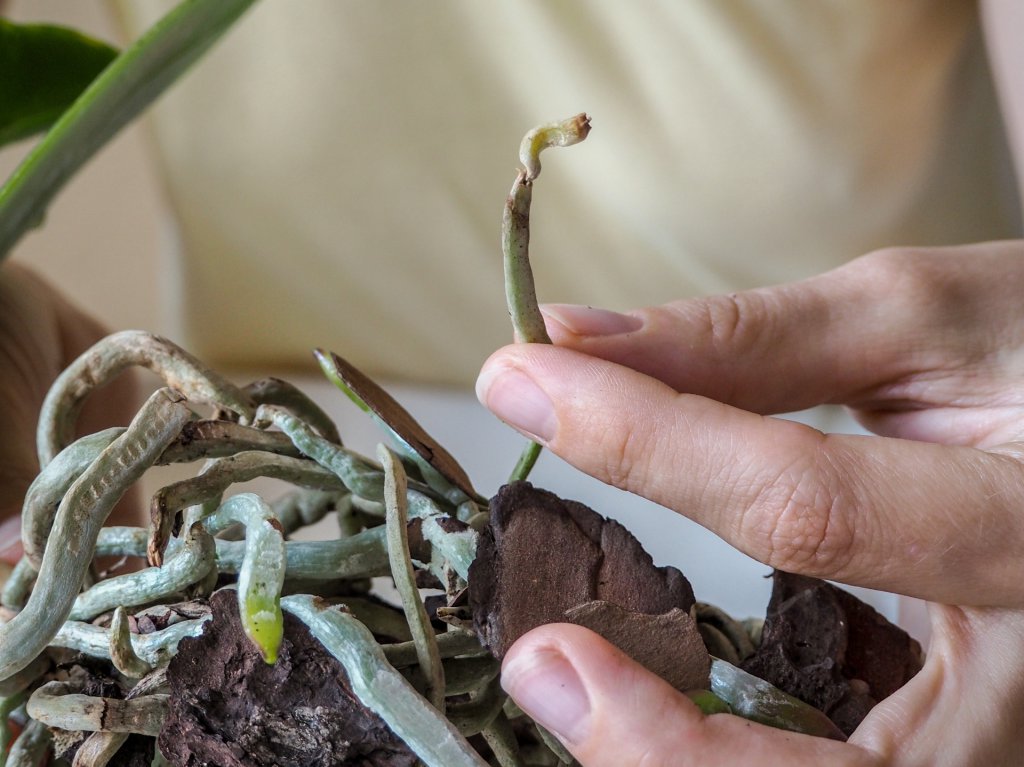
If you’ve recently purchased a new orchid and are eager to see it flourish, don’t overlook the importance of giving its root system a thorough check. Repotting is a critical step in ensuring your beloved plant has the space absorb water and nutrients it needs to thrive on your windowsill or in your garden. Take the time to carefully examine your new acquisition orchid’s roots and give it a healthy home to bloom in.
When it’s time to repot your orchids, don’t forget to check the root system for any signs of trouble. Keep an eye out for these red flags that could indicate unhealthy roots:
Roots are all white or silver
If you notice that the tips of your plant’s roots are suddenly pale and lifeless, beware – this is a tell-tale sign that growth of unhealthy roots has halted. But don’t fret! Simply grab a sterilized cutting implement and carefully prune away these dead sections, allowing your plant to refocus its energy elsewhere.
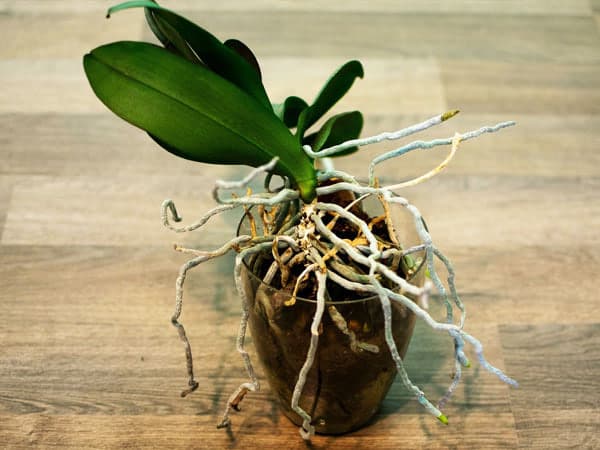
Roots are brown and mushy
The heartbreaking truth about overwatered orchids lies in their roots – they turn brown and soft, and it’s not because they’re spoiled, but because of a pesky mold invading them through rotting roots. It’s a tough situation for these delicate plants, but luckily there are ways to prevent this root rot from taking over.
Don’t let root rot be the downfall of your beloved plant! Instead, try out these helpful tips to potentially your dead roots and bring it back to life.
To save your precious plant from the grips of root rot, eliminating the tainted roots and infected sections of the leaves is essential. However, don’t forget to sanitize your trusty pruning tools beforehand – we wouldn’t want to introduce any unwanted bacteria into the mix!
Revive your orchid by giving it a fresh start. Sterilize a new orchid with potting media, and add in some high-quality potting media before carefully replanting it. If your orchid plant has been through a rough time, consider using Sphagnum moss as it is a great option for retaining moisture and helping the plant recover.
Dry, flat, shriveled orchid roots
Droopy, wrinkled, dry roots on an orchid are a tell-tale sign that it’s been parched for water. Don’t let your precious plant suffer from dehydration!
Roots growing every which way
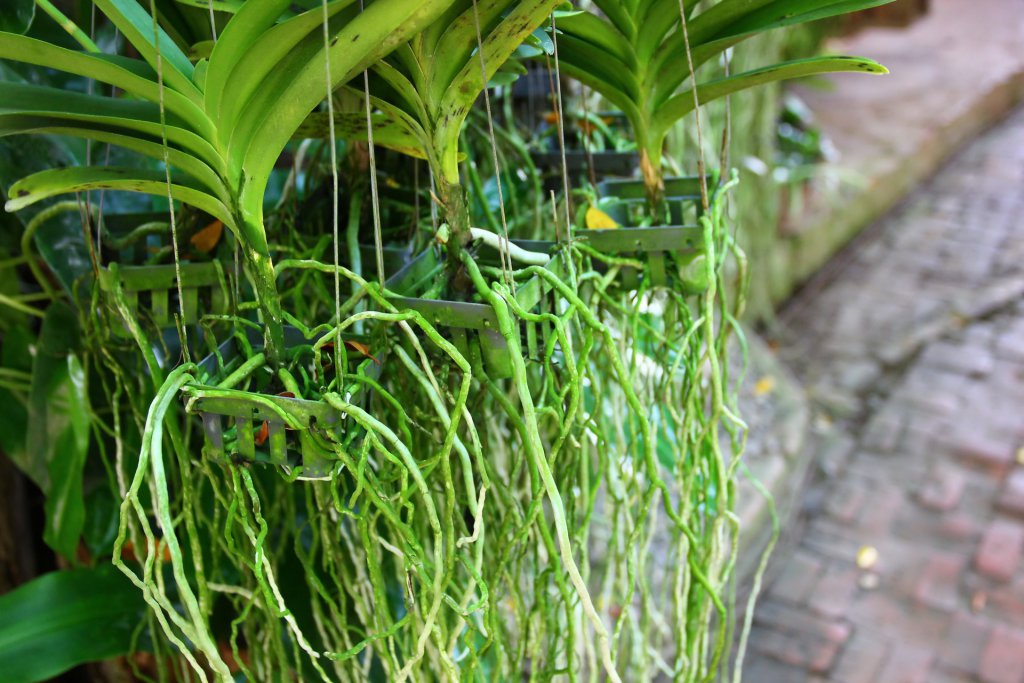
It’s not uncommon for new orchid growers to feel a little spooked by the way their orchid’s roots seem to have a mind of their own. Growing in all directions – up, down, out, and around – it’s no wonder new roots of these orchids can look a bit out of sorts. But fear not, dear friends! This wild and wily root behavior is perfectly normal and completely normal, and a sure sign that your orchid is thriving in its natural habitat.
Did you know that those pretty orchids in pots may actually be growing air roots? It’s true, especially for epiphytic orchids like the Phalaenopsis. While you may not expect it, these very potted orchid plants are actually just following their natural tree-growing tendencies. So, next time you see those little roots popping out, don’t be surprised – it’s just nature doing its thing!
Without its healthy roots throughout, an orchid is like a stranded astronaut in space, disconnected and helpless. It is crucial that we handle these delicate and intricate life support systems with care and precision, ensuring that we do not sever any living, viable roots. The future of these beautiful flowers is in our hands, and we must treat them with the utmost respect and reverence.
If you’re the proud owner orchid pot or of an orchid, you may be surprised to learn that these delicate flowers aren’t as finicky about their roots as you might think. In fact, they can handle a bit of a crowd! However, it’s still important to pay attention to when you’re repotting your orchid pot. Keep it happy and develop aerial roots with these simple tips.
When it comes to repotting houseplants, timing is everything! You don’t want to wait too long or your new potting medium will start to fall apart. Keep an eye out for tiny air root shoots peeking out from the soil, and that’s your cue to give your plant a whole new pot and home. Don’t stress – this typically only needs to happen once a year. Get ready for some happy, healthy plant babies!
Healthy orchid roots: Step-By-Step Guide to Repotting Orchids with Air Roots
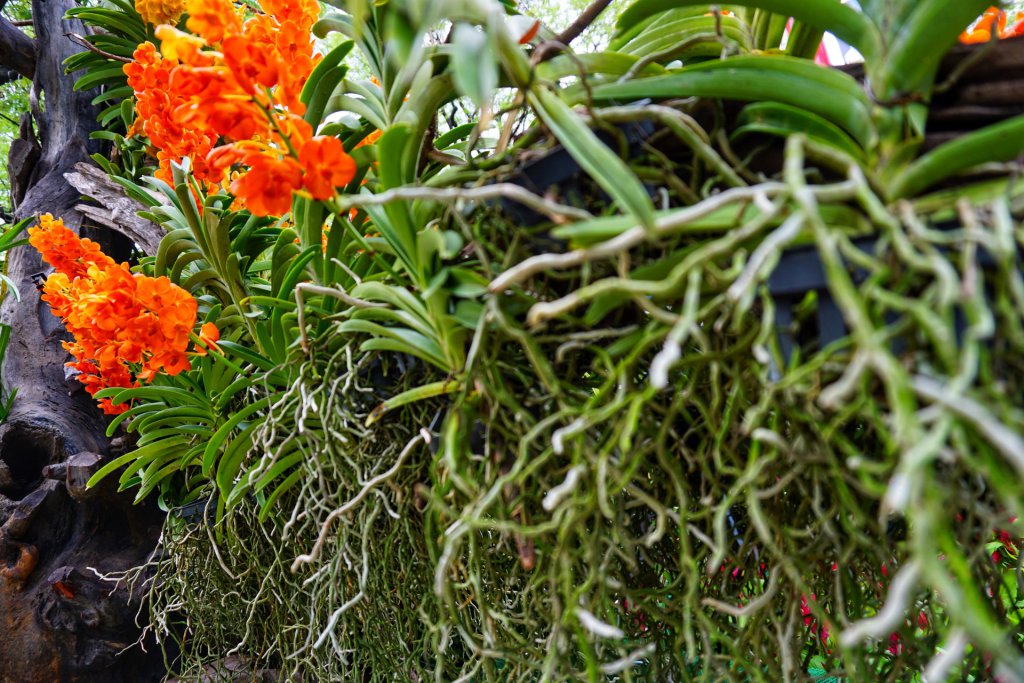
Ready to give your orchid some TLC? The first and crucial step on your journey to healthier roots and blossoms involves a thorough sterilization of all equipment and materials. By removing any harmful bacteria and pathogens, you’ll set the perfect conditions for the repotting process. So grab your snippers, potting mix, and a fresh of potting media, and get ready to say hello to a thriving and healthy aerial roots orchid again!
Transform your kitchen into a sterile haven with just one simple ingredient – boiling water. Extracted from natural sources, this potent liquid is capable of eliminating even the smallest of germs, without the need for any harsh chemicals. Safeguard your family’s health and well-being by incorporating this time-tested sterilizing agent into your daily routine.
Transform your pot into a pristine, sterile vessel by submerging it in a bubbling cauldron of boiling water. Achieving the utmost level of cleanliness has never been simpler or more satisfying.
Transforming potting mix into the perfect planting medium involves a careful process. First, you must pour piping hot water over the mix, allowing it to reach room temperature. But don’t worry, we’re not making tea! Once the mix is appropriately damp, it’s time to create a pristine texture by straining it with a sterilized strainer. Say goodbye to excess water and hello to the perfect medium for your green babies to thrive in.
Revitalize your plants with a little TLC by grabbing some sterilized trimming shears and carefully chopping away any nasty, rotting or dead roots lurking below the soil’s surface.
Transforming your orchid plant into its new home is a delightful adventure. Firstly, relocate your plant to the fresh pot and give it plenty of space to breathe. Gently adjust the soil around its roots, keeping it loose and airy, to offer a comfortable foundation to grow.
Healthy orchid roots: Step-By-Step to Propagating an Orchid with Air Roots
Dive into the magical world of orchid propagation by learning how to clone these beauties using their enchanting air roots! Discover the secrets behind growing new orchids from scratch and unlock the key to transforming a single orchid root into a stunning collection of blooming flowers. With these step-by-step instructions, you’ll be able to expand your orchid family and enjoy their captivating beauty.
Step into the magical world of plant parenting and learn the art of keiki care! Once those adorable little roots reach three inches in length, it’s time to use sterilized scissors to gently snip the baby away from its mother. But don’t worry, you’ll want to leave two inches of stem on both sides of the keiki so it can thrive on its own. Happy growing!
Transform your gardening routine with a touch of nature! Give those plant snips some extra TLC by using a natural fungicide on both mother and baby plants. Say goodbye to harsh chemicals and hello to a thriving garden.
Read more: Clear glass orchid pots : 7 Best
FAQs: Healthy orchid roots
What does an unhealthy orchid root look like?
An unhealthy orchid root may appear brown, black, mushy, or slimy. It may also have a foul odor or appear dry and withered.
What color should the roots of an orchid be?
The roots of an orchid are typically greenish-gray or silvery-white in color.
What do normal orchid roots look like?
Normal orchid roots are typically thin and wiry, with a silvery or grayish color. They may also have small, hair-like structures called velamen that help absorb moisture from the air.
What does dead orchid roots look like?
Dead orchid roots may appear brown or black, mushy, and can easily break off from the plant. They may also have a foul odor.
How do I know if my orchid is OK?
You can tell if your orchid is okay by checking its leaves, roots, and blooms. Healthy orchid leaves should be firm and green, its roots should be silvery-gray and firm to the touch, and its blooms should be vibrant and long-lasting.
What do overwatered orchid roots look like?
Overwatered orchid roots may appear brown and mushy, and can easily break off from the plant. They may also have a foul odor and show signs of rotting. The leaves of the plant may appear yellow or droopy, and the plant may stop blooming.
Conclusion: Healthy orchid roots
In conclusion, healthy orchid roots are vital for the overall well-being and successful growth of orchid plants. They play a crucial role in absorbing water, nutrients, and oxygen, while also providing support and anchorage.
By understanding the characteristics of healthy orchid roots, such as their firmness, color, and absence of rot or damage, orchid enthusiasts can better care for their plants and promote their long-term health and vitality. Regular inspection, proper watering, and providing the right growing conditions are key to maintaining healthy orchid roots and ensuring the success of these beautiful and delicate plants.

